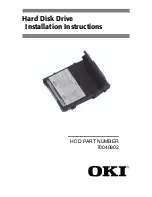
Chapter 6: Replication
Replication
Quantum DXi6900 User’s Guide
131
Additional Information
l
Quantum recommends that you configure and start replication before storing large amounts of data on
the DXi6900.
Note:
To schedule replication for a share or partition, use the
Configuration > Scheduler
page (see
Scheduling a Share or Partition for Replication on page 283
). To limit the amount of network bandwidth
used for replication, enable a constant throttle (see
Enabling System Throttling on page 274
), or
schedule replication throttling (see
Scheduling Replication Throttling on page 284
).
Understanding Data Replication
During data replication, data is sent from one system (the source) to another system, usually in another
location (the target). For example, you might replicate data from a branch office (the source) to a central
office (the target).
Sources
send
replicated data, and targets
receive
replicated data. A target system can receive data from up
to ten sources. A source system can send data to up to two targets. Finally, one system can act as both a
source and a target.
Replication works only with deduplicated data, and data is compressed before it is replicated. Because of
this, the amount of data transmitted between systems during replication is greatly reduced compared to the
original amount of data stored. In addition, a data block is transmitted only if the target does not already have
a copy of the block. Finally, data can optionally be encrypted before it is transmitted.
The DXi6900 can perform the following types of replication:
Replication
Replication occurs when replication is enabled for a deduplicated NAS share or VTL partition and a
replication schedule is configured (or manual replication is performed on a regular basis). For replication to
occur, the source system must be configured to point to the target system. Similarly, the target system must
be configured to accept data from the source system.
To optimize the replication process, deduplicated data is continuously sent in the background from the
source system to the target system. However, a snapshot that preserves the file structure of your data is
sent to the target system only when a scheduled or manual replication job occurs. A snapshot contains all of
the information that is necessary to recreate a share or partition just as it was at the point in time when the
snapshot was created.
Caution:
A saved snapshot is necessary to recover your data at a later time. For this reason, it is not
enough to simply enable replication for a share or partition. You must also configure a replication
schedule (recommended) or perform manual replication on a regular basis to send snapshots of the
share or partition to the target system.
If the source system ever becomes unavailable, you can recover the share or partition on the target system
using a saved snapshot. After you recover a share or partition, it is recreated on the target system and is
available for use. Once the source system becomes available again, you can perform a failback operation to
restore the share or partition to its original location.
















































